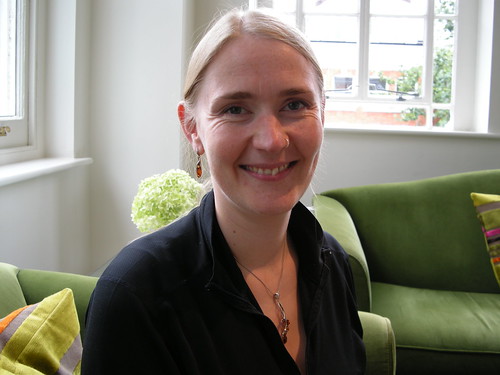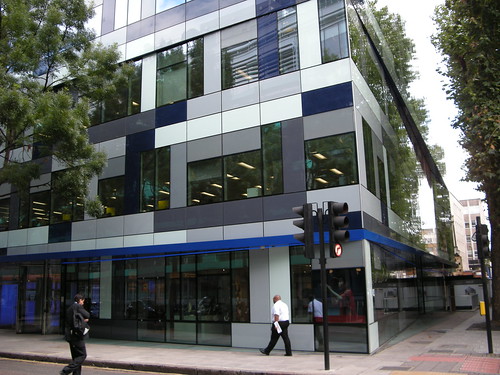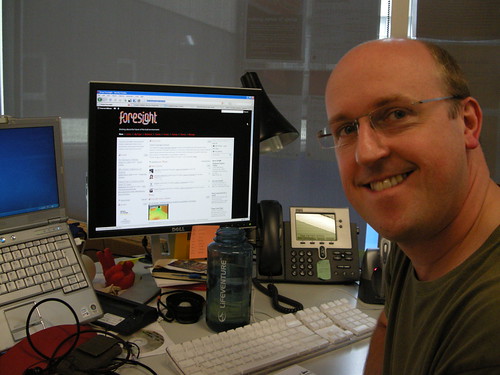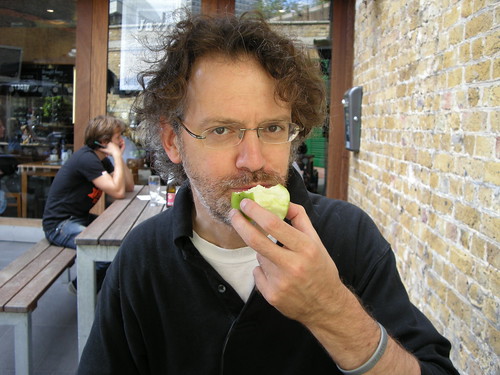A friend of a friend of mine spent years in business development for the BBC before he decided to pack it all in and become The Master Genie of The Universe. Needless to say, The Master Genie no longer has much time for mortal work, being kept busy granting wishes to anyone who chooses to ask, via his Myspace page.
A few weeks ago (when he popped in for dinner), The Master Genie alerted me to a number of websites that he felt were pointing the way to the future of leadership. I’ll list them here for the sake of completeness, if nothing else:
- Fraser Clark’s Parallel Youniversity
- The Foundation for Conscious Evolution
- The Infinite Possibility portal
- The Mayan Age of Co-creation
It’s strange, this hippy thing, because hippies can be a bit like Jehovah’s Witnesses in their constant talk about the looming Apocalypse, and the fact that their (to the majority, slightly barmy) ways are the only route to salvation.
A lot of this can, frankly, be put down to bad marketing – Whirl-y-gig founder, Fraser Clark, banging on about over-use of black bin liners in an illegible font isn’t going to impress anyone, yet a book like The Celestine Prophecy, covering similar issues (though not, specifically, black bin liners), sells over 20 million copies worldwide and spends 165 weeks on the New York Times bestseller list.
Now that the liberal, free-spirited baby boomers are becoming grandparents, isn’t it inevitable that ‘hippy’ values become more mainstream? It seems that we’re all buying organic vegetables, wearing tie-dye and inhaling at High School (thank you, Barack).
The irony is that the recent inflation in petrol and food prices is forcing even the most cynical of us to reconsider our consumerist behaviour. Last month, the UK saw a decline in car use for the first time in years (thank you Steve Moore for pointing me to this), while in the US, sales of gas-guzzling cars have nose-dived (thanks Janet Parkinson!) and airlines saw an unprecedented drop in air travel during their usually busy Labor day weekend.
Sales of energy-saving lightbulbs are soaring. Concerns about health and carbon footprints means that people are turning to freshly-made food, local producers and farmers markets, forcing fast food giants like Macdonalds to rethink their menus and approach.
George Por, executive coach to businesses, government and NGOs, happily admits to being a bit of a hippy. There’s no doubt he has the credentials: a student of sociology, he was jailed (for 20 months) in the 1960s after leading university protests in his native Budapest; exiled from Hungary, he studied tantra in India at Puna in the ‘70s and moved to Berkeley, then Santa Cruz in the ‘80s. His website is decorated with flowers and mind maps.
“It’s clear that we’re at a transitional time in human history,” says George. “Everywhere you can see signs that old systems are dying out while the new ones are still to come.”
The thing about George is that he seems to be getting the right sort of people to listen to him. He was a senior research fellow at INSEAD and a visiting researcher at the London School of Economics, before becoming PrimaVera Research Fellow at Amsterdam Business School. He currently advises both the European Commission and the European Investment Bank.
George is keen to support what he refers to as “the transformation of organisations” and what he calls “evolutionary leadership – large scale systems thinking”.
“I like to think of myself as a community technology steward,” he says. “It’s an emerging profession – at the join between business, technology and personal development.”
(It’s interesting just how many people I’ve spoken to for the book seem to like to apply their own labels to what they do, rather than accept a conventional job title.)
George is interested in what he calls “knowledge gardening”. It’s in pursuit of this, he says, that he spends much of his days, “evaluating gadgets and platforms in terms of their potential contribution to collective intelligence; looking at the organisational requirements; finding out what technology can do for us.”
I’m quite happy to believe in the positive evolution of humankind, but would like some hard scientific facts. George points me in the direction of the following:
- Francis Heylighen, leader of a group of scientists researching the global brain
- Teilhard de Chardin, author of The Phenomenon of man
- Otto Scharmer, Senior Lecturer at MIT and driving force behind the dialogue on leadership project
Okay, so I’m going to try and have a conversation with Otto – watch this space!








